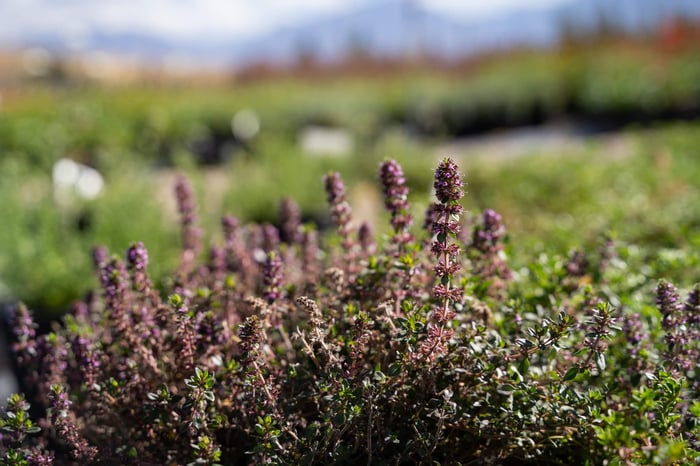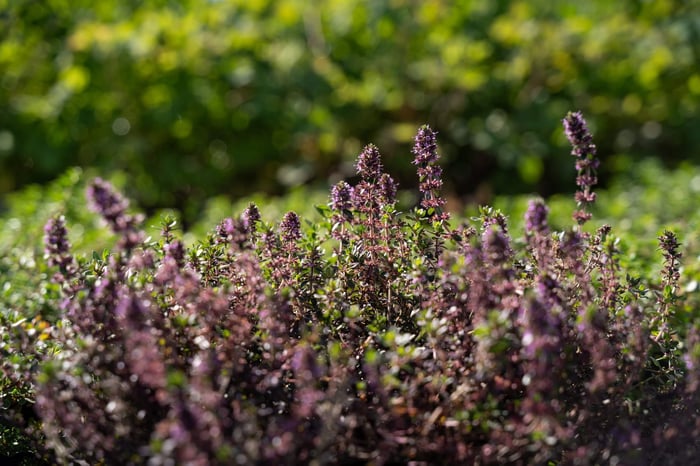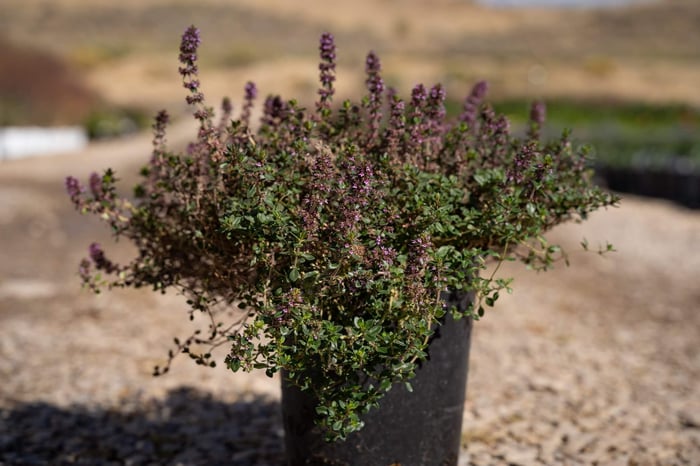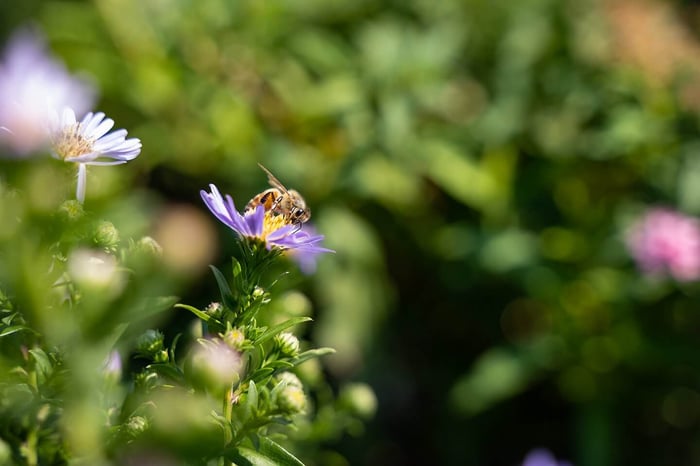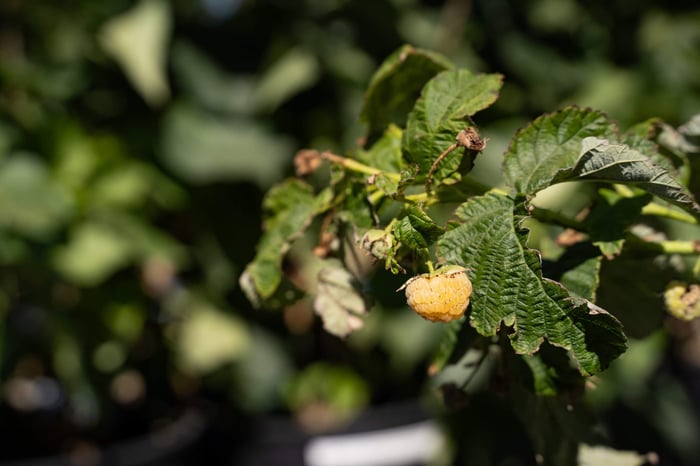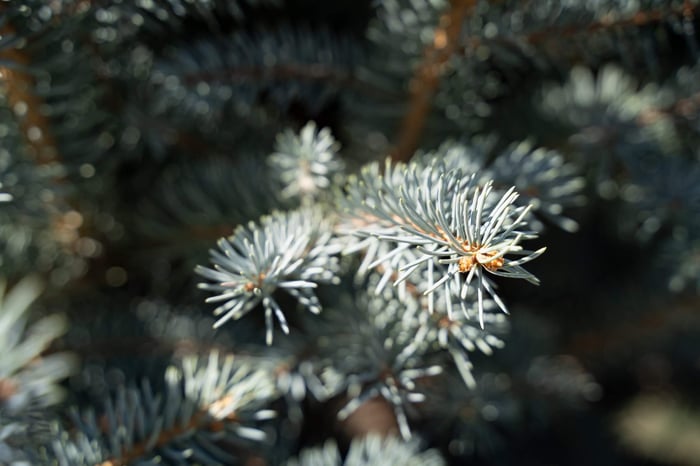There’s something quietly heroic about a mat of cool blue flowers holding its own against Utah’s hot, alkaline summers and cold, windy winters. It takes a special kind of strength to stay strong and undaunted against such odds, especially if you are a blue bloomer. Bluemat Penstemon (Penstemon linarioides subsp. coloradoensis 'P014S' Silverton®) is one of those special plants. It’s adaptable, pollinator-friendly, and perfectly suited to thrive across the Intermountain West—from the Wasatch Front to the high valleys of the Uintas and down into the Colorado Plateau.
Why Bluemat works here
Our region is like an extreme ninja course for plants. It stretches across 4,000 to 8,000+ feet in elevation, testing plants with thin soils, strong UV exposure, low humidity and dramatic temperature swings. Many plants can’t handle it here, but Bluemat Penstemon is a solid performer. Here are just a few reasons why you’ll love it in your yard:
Moderate water needs: It’s much easier to keep Bluemat happy in drought-prone yards. It just needs decent drainage and a deep soak now and again while it’s being established.
It tolerates alkaline soils: The pH level of soils throughout Salt Lake County and the Intermountain West is quite high, so you need plants that aren’t bothered by all that alkalinity.
Conveniently sized: It features a compact, mat-building habit that’s ideal for rock gardens, gravel terraces and low borders.
It’s a reliable bloomer: Pollinators, such as bees and hummingbirds, appreciate Penstemon flowers, especially since they keep blooming late into the summer when many other plants have stopped blooming.
Site selection: sun, soil and microclimates
Typically, penstemon likes full sun, but that may vary according to the microclimates in your yard. Hre are a few guidelines:
Salt Lake Valley and lower valleys (4,000–5,000 ft): Morning sun with afternoon shade or filtered sun can reduce heat stress. If planted in full sun, add mulch and some afternoon shade in the hottest exposures. Bluemat does well even in rock mulch, but remember that rocks will reflect heat. You may actually want that reflected heat in some locations.
Wasatch foothills and rocky slopes: Full sun is excellent; the gritty rock soils provide the drainage Bluemat prefers.
Park City, Heber and higher-elevation sites (7,000–8,000+ ft): Full sun works well, but plan on a longer snow-covered season. Plant your Bluemat penstemon where snow doesn't sit in a puddle around the crown.
Cache Valley and cold pockets: Plant on a south- or west-facing slope that warms quickly in spring to extend the short growing season.
Colorado Plateau and red-rock gardens: Sandy, fast-draining soils mimic the plant’s native conditions. Full sun and minimal summer water are ideal.
Planting and soil tips for Intermountain gardeners
Timing: Fall is an excellent second planting season in Utah. Aim to plant Bluemat in early fall, typically 4 to 6 weeks before the first hard freeze, so roots can establish in cool, moist soils. Spring planting works too, but beware of late frosts.
Soil: Keep it gritty. Improve clay-heavy valley soils with sharp sand, small gravel or pumice and a modest amount of compost. The goal is improved drainage without creating a heavy, moisture-retaining mix that invites crown rot.
Planting depth: Set the crown at the existing soil level. Avoid burying the crown deeper than it was in the container.
Watering: Moderate needs. Give deep, infrequent waterings while the plant is establishing (every 7–10 days depending on heat and wind). Once established, Bluemat tolerates dry spells and can be irrigated on a water-wise schedule (drip or micro-spray recommended).
Mulch and rock: Use a 1–2 inch layer of gravel or rock mulch to reflect heat and encourage drainage. Avoid thick organic mulches right at the crown.
Winter prep: In our cold, windy winters leave stems intact through fall and winter to protect the crown and provide habitat for pollinators. Cut back in late winter or early spring before new growth begins. In exposed or windy sites, a light windbreak or planting near a low rock wall helps reduce desiccating winter winds.
Maintenance and propagation
Bluemat is low-maintenance. Deadhead spent blooms to encourage more flowers and a neater habit. Many penstemons are short-to-medium-lived in cultivation but they’re easy to propagate. If plants become woody after several seasons, renew them by taking soft-tip cuttings in late spring and early summer. These cuttings will root and you’ll have new plants or you can simply replace them with new plants.
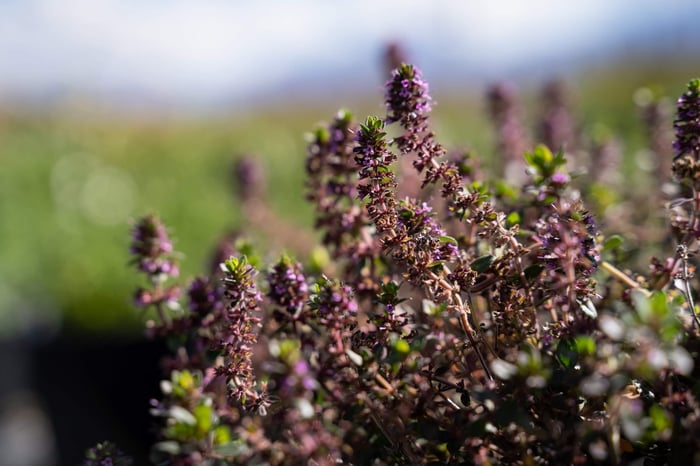
Design ideas
Bluemat penstemon resembles low-growing thyme. Use it to soften paving edges, fill between flagstones, or carpet the front of a drought-tolerant border. Combine with taller Penstemons or upright junipers for layered texture and year-round structure. In urban yards, plant on berms or raised beds with gritty mixes to ensure quick drainage. It’s a beautiful way to reduce summer irrigation.
Pests, problems and pollinators
Penstemons in our dry climate are generally trouble-free. Watch for crown rot in poorly drained soils and for late-spring root heaving in freeze-thaw conditions. A shallow gravel mulch helps reduce exposed roots and improve soil drainage. Expect strong pollinator activity; bees and hummingbirds will reward you with visits through the bloom season.
Seasonal checklist: fall and winter
Plant new Bluemat in early fall for best root establishment.
Mulch with gravel; do not smother the crown with heavy organic mulch.
Reduce irrigation as temperatures cool; keep soil slightly moist until it freezes.
Leave old stems through winter for insulation and wildlife benefit; cut back in late winter before new growth.
Bluemat Penstemon is a genuinely useful plant for Intermountain landscapes—tough where it counts, and pretty when it blooms. Whether you live in downtown Salt Lake, the bench areas, Park City, or Cache Valley, give this tiny penstemon a try. Plant it in the fall and set it up for years of low-water service and pollinator visits.
Visit Progressive Plants to see availability, or explore our catalog for more regionally tested perennials, shrubs and natives that thrive across Utah, Idaho, Wyoming and Colorado. Visit us online at Progressiveplants.com, or rent a golf cart and tour the nursery in person. You’ll love what you see here!

